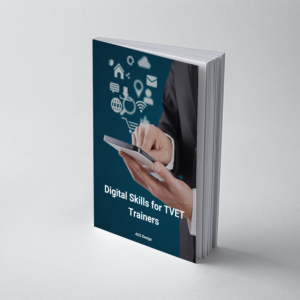Description
“Types of Delivery in TVET: Benefits and Drawbacks” is a free resource for educators, trainers, and policymakers involved in Technical and Vocational Education and Training (TVET). This eBook offers a deep dive into the various methods of delivering TVET, thoroughly analysing face-to-face, remote, blended, and digital delivery approaches. Each method is examined, highlighting both its unique strengths and the challenges it presents.
Face-to-face delivery, a traditional cornerstone of TVET, offers rich, interactive learning environments that facilitate direct interaction, immediate feedback, and hands-on experiences. However, its resource-intensive nature and accessibility issues necessitate exploring alternative methods. Remote delivery, enabled by advances in digital technology, offers unparalleled flexibility and scalability, breaking down geographical barriers and making education more accessible to a wider audience. Despite these advantages, remote learning comes with challenges, including technical requirements and the potential for reduced student engagement.
Blended delivery combines the best aspects of both face-to-face and remote learning, creating a versatile educational framework that caters to diverse learning preferences. This hybrid approach maximises the benefits of both methods but requires careful planning and significant resources to implement effectively. Digital delivery, characterised by innovative tools and platforms, promises cost-effective and engaging learning experiences. However, it also raises concerns about the digital divide and potential isolation among learners.
This eBook provides practical insights and decision-making frameworks to help educators and policymakers navigate these complexities. It equips readers with the knowledge needed to implement effective and inclusive TVET programmes, ensuring that all learners have the opportunity to succeed. By understanding and leveraging the advantages of each delivery method while addressing their drawbacks, stakeholders can create robust educational environments that prepare learners for the dynamic demands of the modern workforce.
“Types of Delivery in TVET: Benefits and Drawbacks” is a useful guide for those seeking to enhance the quality and accessibility of vocational education. With its balanced perspective and strategic approach, this eBook is a critical tool for anyone planning, developing, or implementing TVET programmes.





